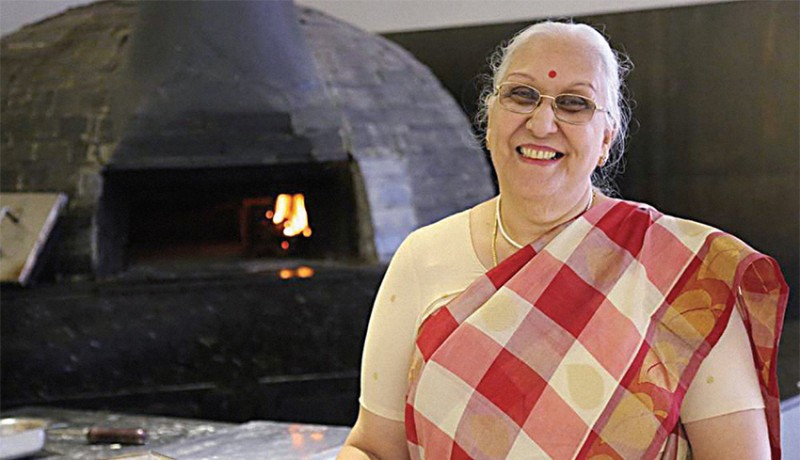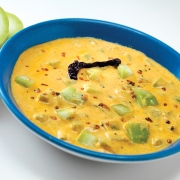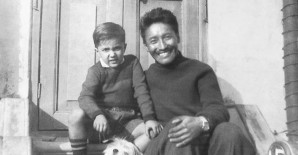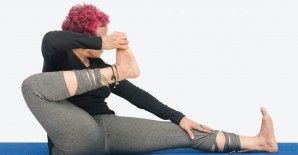
Columns

A Series By Pratibha Jain About Silvers Who Believe Nurturing The Body And Mind Is The Key To Joy.
Featuring Chandri Bhat from Kuala Lumpur
The lanes of her life seem to have gently meandered towards culinary excellence—almost as if she were destined to find her life’s calling and joy in food. Food connoisseur, researcher and cookery expert Chandri Bhat, 78, the author of newly published cookbook Kitchen Nostalgia: 50 Heartwarming Vegetarian Curries, is the embodiment of warmth and nurturing.
Chatting with Chandriji, one can see her simple value system and serenity. She speaks about her life, peppered with anecdotes from her childhood and growing years, and elaborates upon her profession and love for food-related matters, seasoned with enthusiasm and charm. Not just a culinary expert, Chandriji disseminates her knowledge with ease and is best at sharing, teaching and educating, with a generous helping of her years of experience. She is testament to the fact that when you give love, you receive it back in much larger proportions. In fact, Nina Reddy, joint managing director of Savera Hotels, decided to self-publish Chandriji’s recipes as a tribute to her love, warmth and dedicated professionalism.
Congratulations, Chandri ma’am, on your cookbook. Was it a long pending dream come true?
Thank you, Pratibha. Actually, I never thought about it. I was just happy gathering all my recipes in my files. I never felt any need to publish them in a volume. This is truly a surprise blessing.
To us, it is a natural culmination of your culinary passion. How did you first discover your love for cooking?
It would be right to say that I grew up with it. My childhood home in Mangalore was one of those quaint houses with a large courtyard. At that time, all functions and celebrations would take place at home; even those of our relatives. For large events, professional cooks would be invited. I was completely fascinated with their skills and imbibed the flavours and aromas that wafted across. Perhaps that is when the seed was sown!
Did the women of the family participate in the cooking?
It was always like community cooking at home. Generally, there were cooks at home but my mother, grandma and aunts supervised in detail and would be very involved. The women of the house took pride in the food they served.
Between them all, did you get a chance to cook?
I did not participate in the cooking. However, we had cows and buffaloes at home. And in those days, we did not even think of selling milk. So the surplus milk was often used to made khova and peda and that was when I was allowed to stir the milk while it boiled to a thick consistency. I also remember grinding masala along with my aunts. My elder sisters got married even before I turned five. So for me, cooking was not a chore but a fun and grown-up thing to do!
When did you start experimenting in the kitchen?
I think it was around the time when I joined college in Bangalore. I used to read a lot of magazines and was particularly interested in their food sections. When I came home during the holidays, I would try out some new recipes. My mother believed I should learn all the housekeeping skills and, hence, sent me to stay with my older sister in Bandra, Mumbai, once I completed college. My sister, in turn, introduced me to all her friends in the colony. It was a cosmopolitan group and I got the chance to sample and dabble with a variety of cuisines as they would invite me over to learn their dishes.
Hmmm…the making of a perfect housewife!
That was exactly what mom wanted! So after six months in Mumbai, she sent me to stay with my other sister in Delhi for another six months. I enjoyed that too. By nature, I love exploring. So even though I have always been a vegetarian, I also experiment with non-vegetarian dishes.
Looks like you surpassed your mother’s dream! How did your career take off?
[Laughs] I was married at 22 and came to Chennai. In 1971, I joined the Cultural Academy at Santhome. I did their course for two semesters after which they asked me to teach there. I started teaching the course for working women, sponsored by Bajaj Appliances. That’s how I got into consultancy for kitchen appliances.
You have also travelled overseas on work?
Yes, I also worked for Panasonic. They sent me to attend international workshops. Over the past 45 years, I have been a consultant for many leading restaurants, makers of kitchen appliances and food products. A recent project was for MTR.
Alongside, you continued your cookery classes?
Oh yes, that is something I have always enjoyed tremendously. There is something so satisfying about sharing recipes and the unparalleled feeling of excitement when students come back to share their success stories. I feel blessed that I have taught three to four generations of people in the same families.
It sounds like destiny was just unfolding itself.
In fact, after my husband, Dr Manohar Bhat passed away, I continued to stay in Chennai for almost 15 years and kept busy with my cookery classes and other food-related assignments. In 2013, I wound up my home in Chennai and started sharing my time between my two daughters. The elder one, Renuka, lives in Bangalore while Vrinda lives in Kuala Lumpur, Malaysia. Now I spend most of my time in Kuala Lumpur.
How did the cookbook happen?
Once in a while, I would think of writing a cookbook but I always felt writing was a solitary occupation. I felt that when I am older and do not have much energy, I will write—that day has not yet come! I still feel energetic. But jokes apart, this cookbook is Nina Reddy’s generosity, vision and love for me. During the past few years, I observed that Nina was involved with many charities. She was always asking me to bring out a book. So I did this book and gifted it to her to use for any cause dear to her heart. She was deeply touched and took upon herself to publish it and donate the proceeds from the sales to the Tamil Nadu chapter of the National Association for the Blind.
That is so wonderful and speaks of the generosity of your own spirit. Tell me, which cuisine interests you the most?
As I said, I love experimenting. I have taught Indian, Chinese, Thai, Italian, Mediterranean, Mexican and fusion cuisine. But just as every traveller returns home, I have also come back to discovering my comfort food in the Mangalore cuisine of my childhood, which is simple home-cooked South Indian vegetarian food.
Why have you chosen to feature curries in your cookbook?
These days, most homemakers are hard pressed for time. Elaborate meals with more than two dishes are generally reserved for weekends or holidays. So, if there is one good curry, it can be paired with rice, chapattis or even bread for a satisfying meal.
Also, I feel that if a homemaker is familiar with 10-15 curries that can be cooked without having to refer to the recipe for every step, cooking will be faster and less stressful. My aim while picking these time-tested recipes was to offer something readers would like to cook often and effortlessly with confidence.
Do you cook even now?
Even when I had helpers, I liked to do the main cooking. So wherever I am, I dabble in the kitchen quite a bit. In Kuala Lumpur also, we make our simple traditional meals at least three to four times a week.
How would you define comfort food?
Comfort food is something that nurtures you: it is what you like to eat when you are tired, very hungry or stressed. Comfort food is not just physically but emotionally nurturing. It also provides a nostalgic or sentimental value and, more important, a taste of home!
Paduvalakai palida
Snake-gourd yoghurt curry
A signature recipe from Chandri Bhat’s new cookbook Kitchen Nostalgia, this light and healthy dish from Karnataka is a fusion of raita and curry.
Ingredients
- Snake gourd: 400 gm
- Yoghurt: 300 ml
- Grated coconut: ½ cup
- Dry red chillies: 6-8
- Mustard seeds: ½ tsp
- Fenugreek: ¼ tsp
- Turmeric powder ¼ tsp
- Oil: 2 tsp
- Salt to taste
For tempering
- Ghee or oil: 1 tbsp
- Mustard seeds: 1 tsp
- Black gram dal: 2 tsp
- Coriander leaves to garnish
Method
Scrape away the ash-like layer on the gourd lightly. Cut into half, discard the core and seeds. Cut the gourd into 1.5-cm pieces. Add about ¾ cup of water to the snake gourd and cook with salt and turmeric. Heat the oil and roast the mustard, fenugreek and red chillies. Add the coconut and fry till light brown. Cool and grind all these together into a smooth paste. Add the ground paste to the cooked gourd. Simmer for 2 minutes and remove from flame. Beat the yoghurt till smooth and add to the curry. Heat the oil for tempering in a small fry pan. Add the mustard; when it splutters, add the dal. When the dal turns golden brown, remove from flame and add to the curry. Mix well and stir with the coriander leaves. Serve with steamed rice and rasam.
Pratibha Jain, an author and translator from Chennai, is the co-author of two award-winning books Cooking at Home with Pedatha and Sukham Ayu.
Her area of specialisation is documenting Indian traditions through research, translation and writing
Photographs by K Vijay Sekar / Kitchen Nostalgia Featured in Harmony — Celebrate Age Magazine November 2016
you may also like to read
-
Mental workout
Mukul Sharma tells you how to keep those grey cells ticking Everyone will ultimately lose his or her brain….
-
Helpline
Dr Harshbir Rana answers your queries on personal and social issues related to ageing, elder care and intergenerational relationships ….
-
Off the cuff
Raju Mukherji pays tribute to his first hero, Tenzing Norgay, an exemplary mountaineer Darjeeling, 1955. Dr ‘Pahari’ Guha Mazumdar….
-
Yoga RX
Shameem Akthar shows ways to control debilitating ankle pain through regular practice Ankle pain is so common and prevalent….








